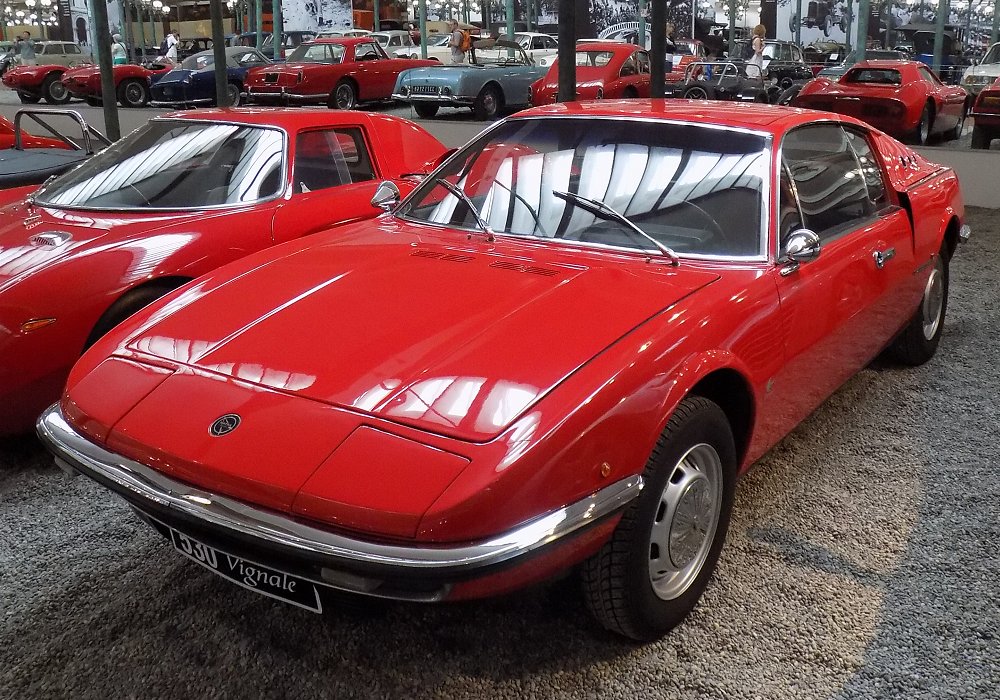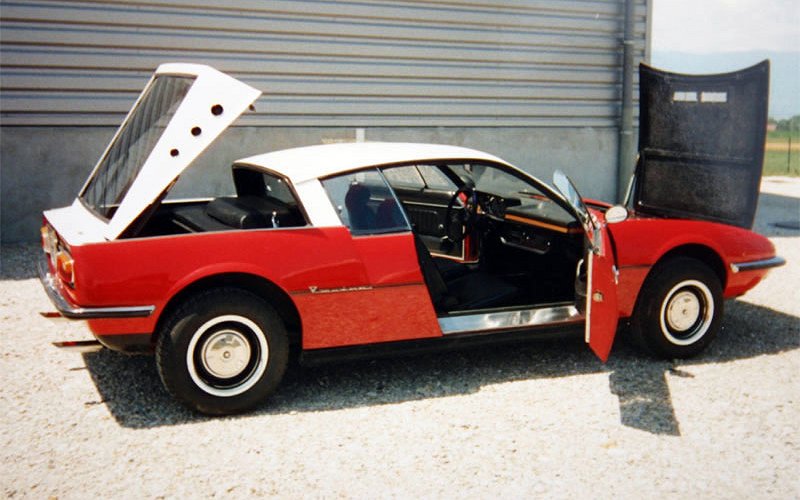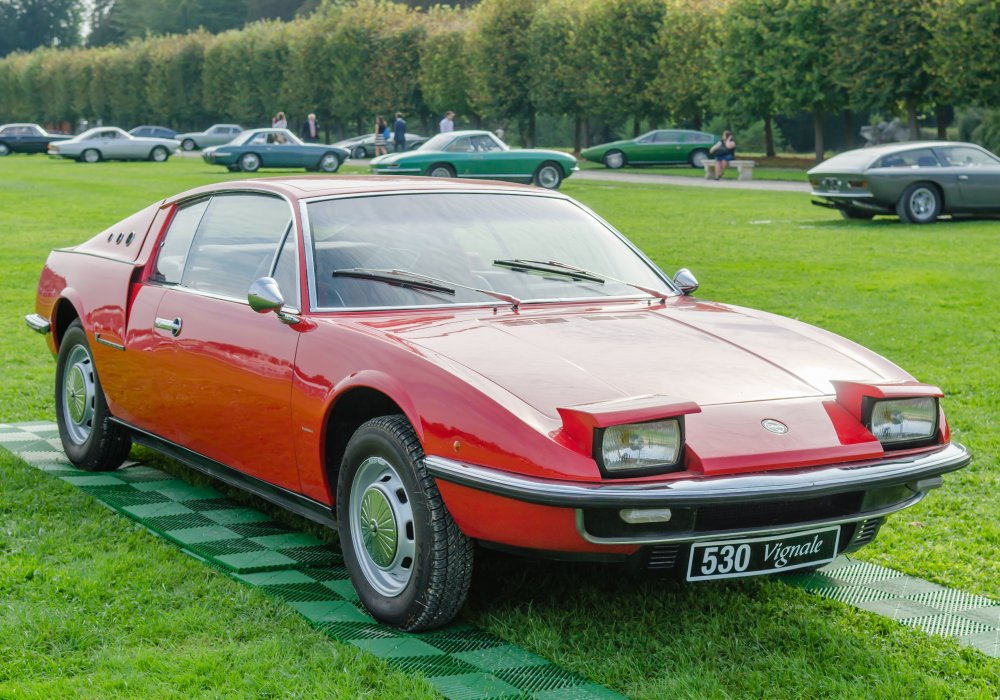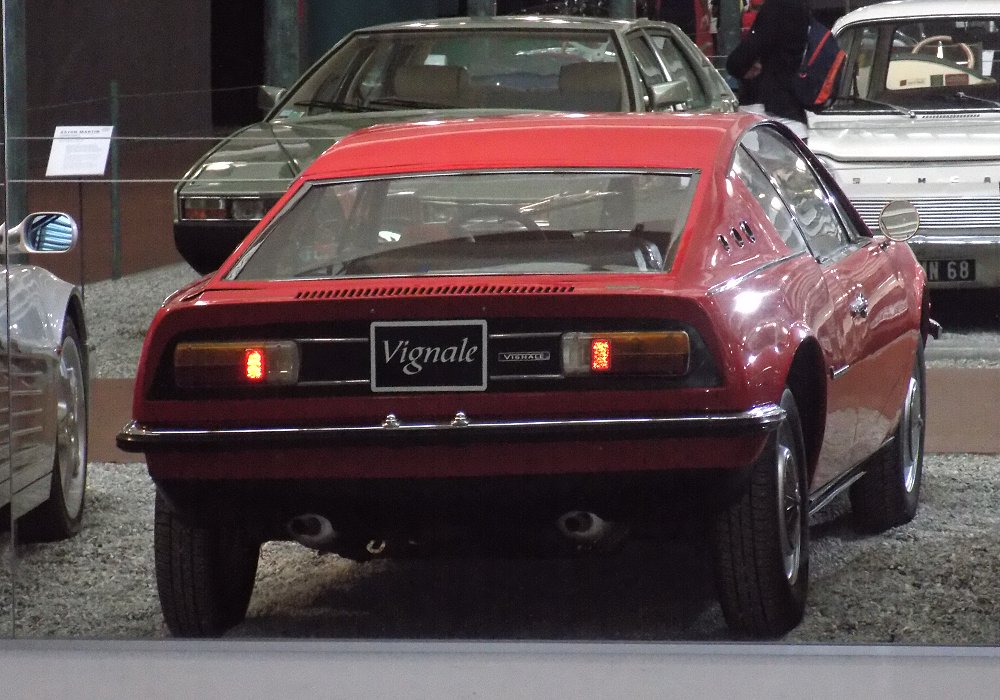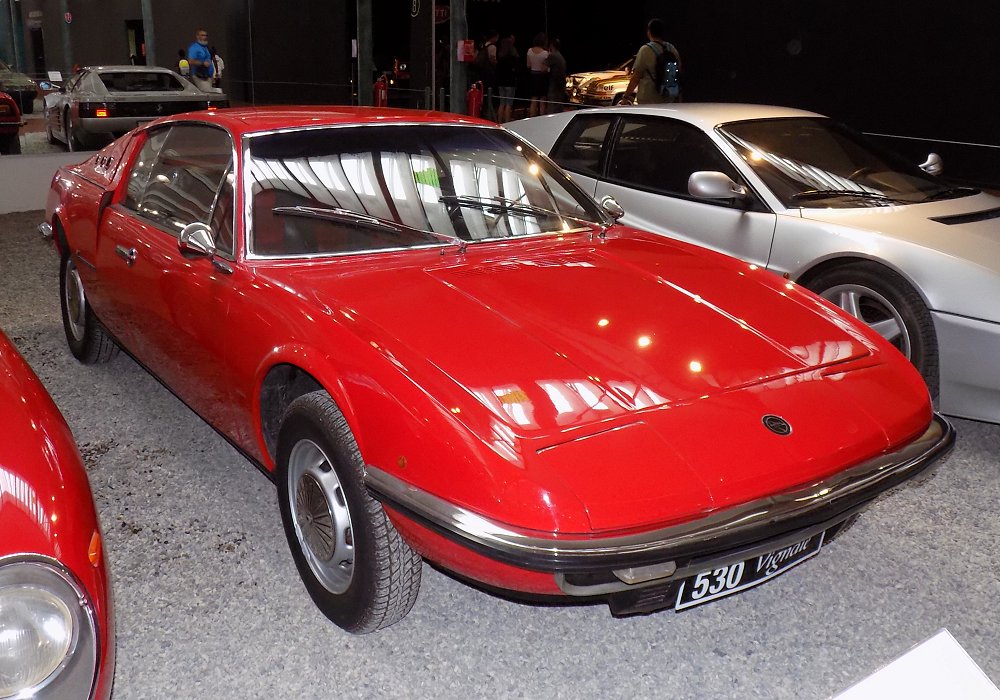Description
The Matra 530 Vignale was a unique design study created in 1968 by the renowned Italian styling house Carrozzeria Vignale. Based on the mechanical foundations of the early Matra M 530 A, it served as an ambitious attempt to reinterpret Matra’s new mid-engined 2+2 GT through the lens of Italian coachbuilding culture. Although it never entered production and remained a one-off showpiece, the Vignale prototype stands today as one of the rarest and most intriguing chapters in Matra’s design history — a moment when French engineering and Italian styling briefly intersected to produce a strikingly different interpretation of the 530 concept.
The project began shortly after Matra had launched the original 530 A. Matra’s management wanted to test the car’s potential in foreign markets and explore whether a more exotic, sculpted body might broaden its appeal. Vignale, already known for its work with Ferrari, Maserati and Jensen, was commissioned to produce a complete restyling of the 530’s exterior while retaining the car’s core engineering: the mid-mounted Ford V4 engine, the steel backbone chassis and the practical 2+2 interior layout.
Mechanically, the Vignale car remained pure 530 A. It used Matra’s central steel spine chassis with fibreglass bodywork, though Vignale replaced the original shell entirely with a new, bespoke design. The transversely mounted Ford Taunus 1.7-litre V4 engine, producing around 70 horsepower, sat ahead of the rear axle as in the production model. The fully independent suspension layout — double wishbones at the front and coil-spring trailing arms at the rear — was retained, as were the car’s four disc brakes and rack-and-pinion steering. Thus, beneath the surface, the Vignale car behaved very much like the standard 530: light, stable and predictable, with easygoing performance suited to touring.
What made the Matra 530 Vignale remarkable was its styling. Alfredo Vignale’s team abandoned the angular, futurist lines of Matra’s original design and instead shaped a sleek, flowing body with distinctly Italian proportions. The front end featured a wide, low grille aperture flanked by deeply recessed headlights, giving the car a more luxurious GT character. The bonnet and wings were smooth and sculpted, replacing the geometric surfaces of the production 530 with soft curvature and a more classically elegant stance.
Along the sides, the Vignale car displayed cleaner, more graceful lines, a slimmer roof profile and carefully sculpted wheelarches. The glasshouse was more refined, with thinner pillars and a longer rear quarter window that visually stretched the cabin. The targa-style roof and removable panels of the production car were retained, but the Vignale interpretation incorporated them more seamlessly into the silhouette.
At the rear, the car departed dramatically from Matra’s original fastback layout. Vignale gave the prototype a wide, horizontal tail with full-width light clusters and crisp styling reminiscent of contemporary Italian GTs. The result was a car that looked less like an experimental French mid-engine coupé and more like a stylish Mediterranean sports tourer — refined, elegant and noticeably more premium in appearance.
Inside, the Vignale 530 presented a more luxurious cabin than the standard Matra. Higher-grade materials, revised door panels, improved upholstery and a more sophisticated dashboard layout contributed to an upmarket atmosphere. Vignale sought to highlight the practicality of the 2+2 layout while giving the interior a more exclusive feel. Even so, the essential form of the cabin — low seating, excellent visibility and simple ergonomics — remained faithful to the Matra foundations.
The Matra 530 Vignale was shown publicly at the 1968 Geneva Motor Show. It attracted considerable attention for its elegant interpretation of Matra’s unusual mid-engined layout, and many contemporary observers viewed it as a more marketable alternative to the original French design. Yet despite the positive reaction, it was never intended for production. The bespoke bodywork would have been far too costly to manufacture at scale, and Matra preferred to keep full control of its design direction — a direction that would ultimately lead to the more refined 530 LX and later to the Bagheera and Murena.
Only a single Vignale prototype was built, making it one of the rarest Matra vehicles in existence. Today, it stands as a fascinating “what-if” moment in automotive design — a glimpse of an alternative future in which Matra’s mid-engined GT might have adopted Italian coachbuilt elegance instead of French industrial modernism.
The Matra 530 Vignale remains a captivating historical footnote: a beautifully styled, technically conventional yet visually transformative reinterpretation of the 530 platform. It represents a brief, unique collaboration between two very different automotive cultures and underscores the creative potential of Matra’s innovative mid-engine architecture during its formative years.
